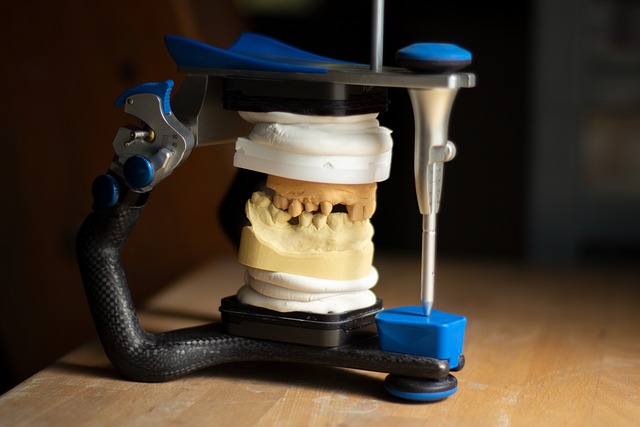Dental malpractice claims arise from diagnosis errors, treatment mistakes, and lack of informed consent. Delays or procedure errors pose risks. Dentists can protect themselves with professional liability insurance (malpractice insurance), ensuring financial stability against lawsuits. Selecting a policy requires understanding limits, exclusions, and claims processes. Initial steps in facing a lawsuit include evidence gathering and consulting legal experts. Robust safety protocols, evidence-based practices, and meticulous documentation mitigate risks. Staying current with legal trends through news, publications, and seminars enhances malpractice protection.
Protect your dental practice from legal claims with comprehensive knowledge and the right insurance. Dental malpractice protection is essential, as lawsuits can be emotionally draining and financially devastating. This article guides you through understanding common causes of dental malpractice claims, the importance of professional liability insurance, key policy components, navigating legal proceedings, mitigating risks, and staying informed about dental malpractice law trends. By implementing best practices, dentists can minimize their exposure to malpractice suits and focus on patient care.
- Understanding Dental Malpractice Claims: Common Causes and Risks
- Importance of Professional Liability Insurance for Dentists
- Key Components to Consider in a Dental Malpractice Insurance Policy
- Navigating Legal Proceedings: What to Expect After a Claim
- Mitigating Risk: Best Practices for Safe Dental Procedures
- Staying Informed: Updates and Trends in Dental Malpractice Law
Understanding Dental Malpractice Claims: Common Causes and Risks

Dental malpractice claims can arise from various situations, and understanding these potential risks is crucial for any dental practitioner to safeguard their practice. Common causes often include errors in diagnosis, treatment mistakes, or failure to obtain informed consent from patients. For instance, misinterpreting X-rays could lead to inappropriate treatment decisions, causing harm to the patient. Similarly, neglecting to discuss alternative procedures or adequately explaining a proposed treatment plan can result in legal repercussions if patients feel they were not fully informed.
Additionally, delays in treatment or errors in dental procedures are significant risk factors. These may include incidents like administering incorrect medication, using unsterilized equipment, or causing injuries during procedures due to lack of skill or attention. Such occurrences can lead to patient dissatisfaction and subsequent legal actions seeking compensation for pain, suffering, and potential long-term effects. Therefore, ensuring proper training, adherence to safety protocols, and ongoing professional development is vital for dentist malpractice protection.
Importance of Professional Liability Insurance for Dentists

For dentists, protecting your practice from legal claims is non-negotiable. While maintaining high standards of care and adhering to ethical guidelines is essential, accidents happen, and patients may still file lawsuits due to perceived or actual malpractice. This is where Professional Liability Insurance, also known as malpractice insurance, plays a pivotal role in dentist malpractice protection. It acts as a shield, safeguarding your financial well-being and the stability of your practice should you face a lawsuit due to alleged negligence.
Without adequate coverage, a single claim could result in significant financial strain, potentially leading to the closure of your practice. Dentist malpractice protection ensures that legal fees, settlement costs, and damages are covered, providing peace of mind as you focus on delivering quality dental care. By investing in this vital insurance, dentists can navigate the complexities of the legal system with confidence, knowing their interests are secured.
Key Components to Consider in a Dental Malpractice Insurance Policy

When selecting a dental malpractice insurance policy, several key components should be at the forefront of your considerations to ensure comprehensive protection for your practice. Firstly, understand the policy’s financial limits and coverage, ensuring they align with your practice’s needs. Adequate limits protect you from significant financial exposure in case of complex or high-damage claims. Additionally, review the policy’s definition of dental malpractice, as different policies may have varying interpretations, impacting what’s covered and what’s not.
Secondly, pay close attention to the policy’s exclusions. Certain activities or situations might be explicitly excluded from coverage. For example, some policies might exclude routine care procedures or injuries arising from non-negligent treatment decisions. Furthermore, understand the claims process, including reporting deadlines and the steps required to resolve disputes. A clear and efficient claims handling process can significantly impact how smoothly any potential issues are navigated.
Navigating Legal Proceedings: What to Expect After a Claim

When facing a legal claim, whether it’s a dentist malpractice lawsuit or any other profession, understanding what to expect is crucial for navigating the process successfully. The initial steps often involve gathering evidence, documenting patient records, and consulting with legal experts to build a robust defense strategy. This process can be complex, demanding significant time and resources.
During this period, it’s essential to remain calm and professional, ensuring all relevant information is promptly gathered and organized. Many practices opt for comprehensive insurance coverage as a protective measure, which can significantly mitigate financial risks. Such measures provide peace of mind, allowing dental professionals to focus on patient care while managing potential legal challenges effectively.
Mitigating Risk: Best Practices for Safe Dental Procedures

Implementing robust safety protocols is paramount for dentists to mitigate risks and protect themselves from potential legal claims. Adhering to evidence-based practices ensures patient safety while documenting every step of the dental procedure serves as a defensive measure. Using sterile equipment, proper hygiene techniques, and up-to-date medical records can significantly reduce the likelihood of errors or negligence allegations.
Additionally, staying informed about local laws and regulations pertaining to dentist malpractice protection is crucial. Regular training sessions on updated procedures and patient management can equip dentists with the knowledge to anticipate and manage potential risks effectively. Open communication with patients regarding treatment plans, potential side effects, and consent forms also fosters trust and minimizes misunderstandings that could lead to legal disputes.
Staying Informed: Updates and Trends in Dental Malpractice Law

Staying current with legal trends is a crucial aspect of dental malpractice protection. The field of dental law, particularly regarding malpractice claims, is constantly evolving. Staying informed about recent updates and developments in dental malpractice litigation can help dentists anticipate potential risks and adjust their practices accordingly. By keeping pace with case law, regulatory changes, and emerging patient rights movements, dental professionals can ensure they adhere to the highest standards of care and minimize exposure to legal claims.
Regularly reviewing legal news, subscribing to industry publications, and attending continuing education seminars focused on legal updates are effective strategies for dentists to stay informed. These measures enable them to identify changing trends in dental malpractice cases, understand emerging best practices, and implement necessary precautions. Such proactive steps contribute significantly to the overall success and longevity of a dental practice by fortifying it against potential legal challenges related to dentist malpractice protection.
